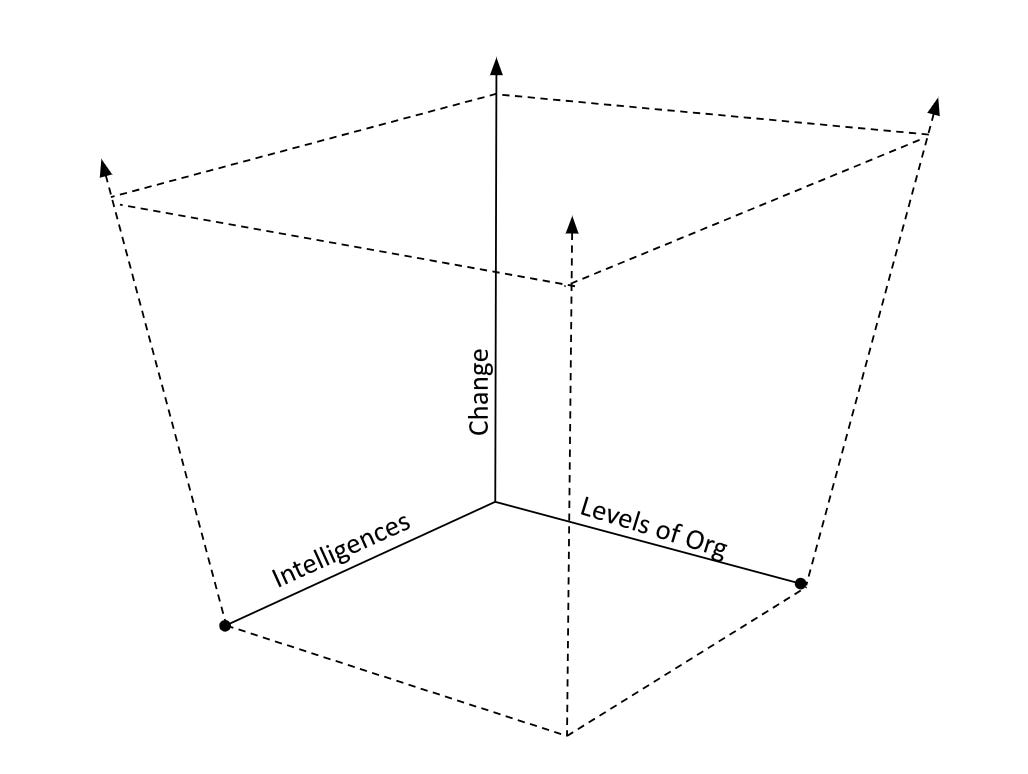With all the contexts that an enterprise leader touches, they have to have an awareness of the organization in multiple dimensions at once.
A framework I tend to use in coaching is head, heart, and gut – it’s a way of describing different intelligences that leaders use to navigate the world. I discuss them in more detail here.
Head: Analysis, synthesis, strategy, etc.
Heart: Connection, purpose, meaning, relationships,
Gut: Instinct, decisions, action, catalyzing change.
For someone making decisions for an entire organization, these intelligences have to apply to varying levels – For the enterprise, at the level of the team, and at the level of the individual. There may be other levels (business group, department, etc.) but for the purposes here I’m going to use the enterprise, team, and individual level because that’s how leaders most immediately experience their business.
Enterprise: Where are we going and how do we get there?
Team: Is my core team clear, aligned, and supported?
Individual: Does this person (including me) have the knowledge, skills, ability and satisfaction to do their best work?
By putting these dimensions together, a leader can use a visual like the one below as a quick mental model to sense where there might be gaps and what needs attention. This isn’t intended to be a comprehensive business audit, but more of an elevation map of the business to quickly scan with intuition how everyone and everything is doing in addition to typical performance and financial indicators.
To add another layer, if the organization is growing at any clip then this matrix has to be dynamic – knowledge has to evolve, team connection has to evolve, and the way the enterprise handles change has to evolve, etc. Visualizing the expansion across these dimensions might look something like this:
As with any change, there’s risk or pain involved as well as a potential benefit – or hope. Some of these may be easier or more difficult depending on the person, but the idea here is when a leader needs to coach or invite change they can paint an honest picture of both the difficulties of changing as well as the hopeful future. A framework like this can also be used in self-reflection to consider what areas I – as the leader – am most resistant to embracing change in and what needs to shift in order for me to take the risk and reap the long-term benefit.
Again, I’m not suggesting a framework like this is scientific or comprehensive – but I do think having some sort of elevation map that can cover multiple dimensions of the business as well as account for a change dynamic could increase a leaders’ clarity, reduce overall psychological burden, and provide a tool for coaching the team through seasons of complex change.
I’d be curious what your thoughts are about a framework like this.







